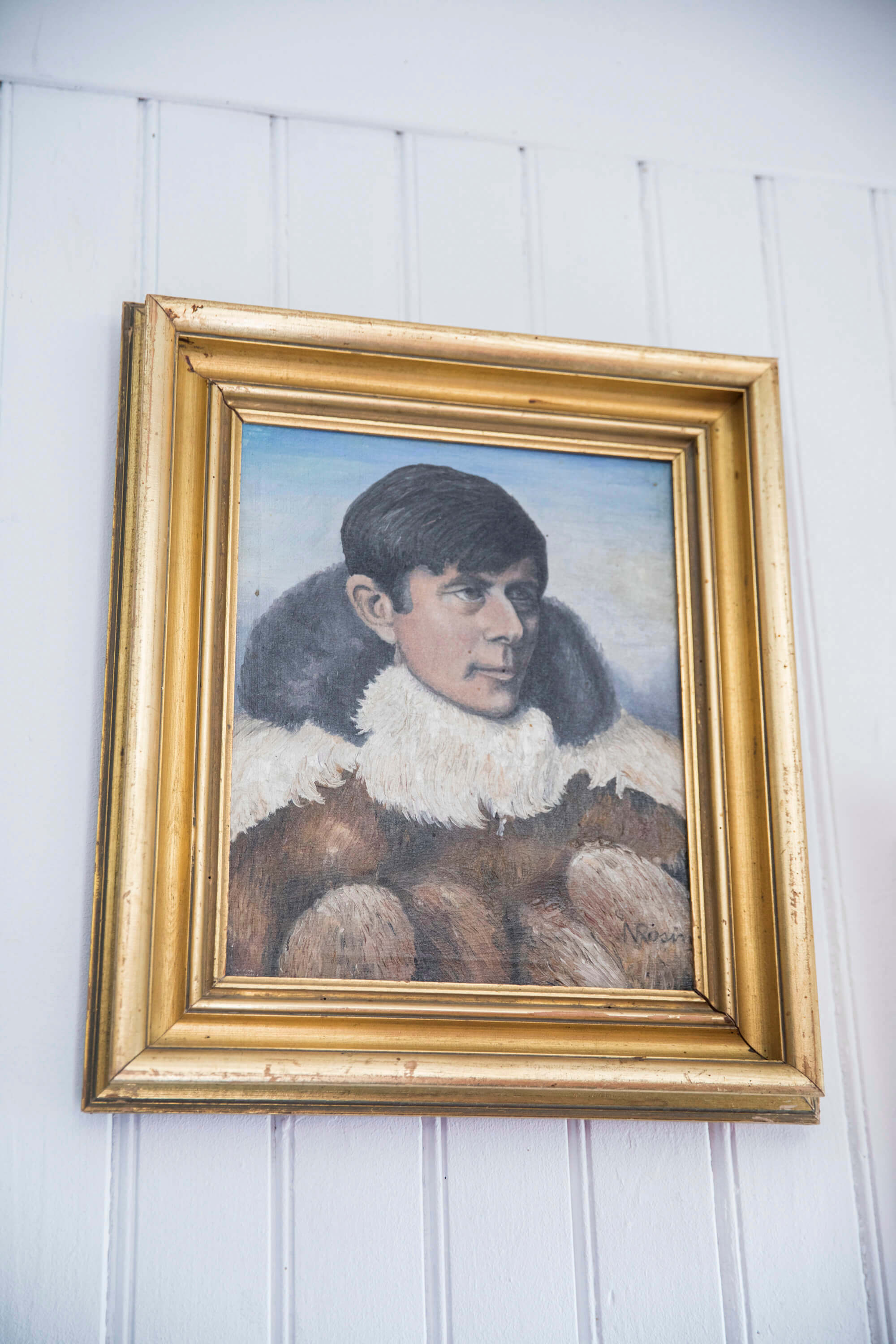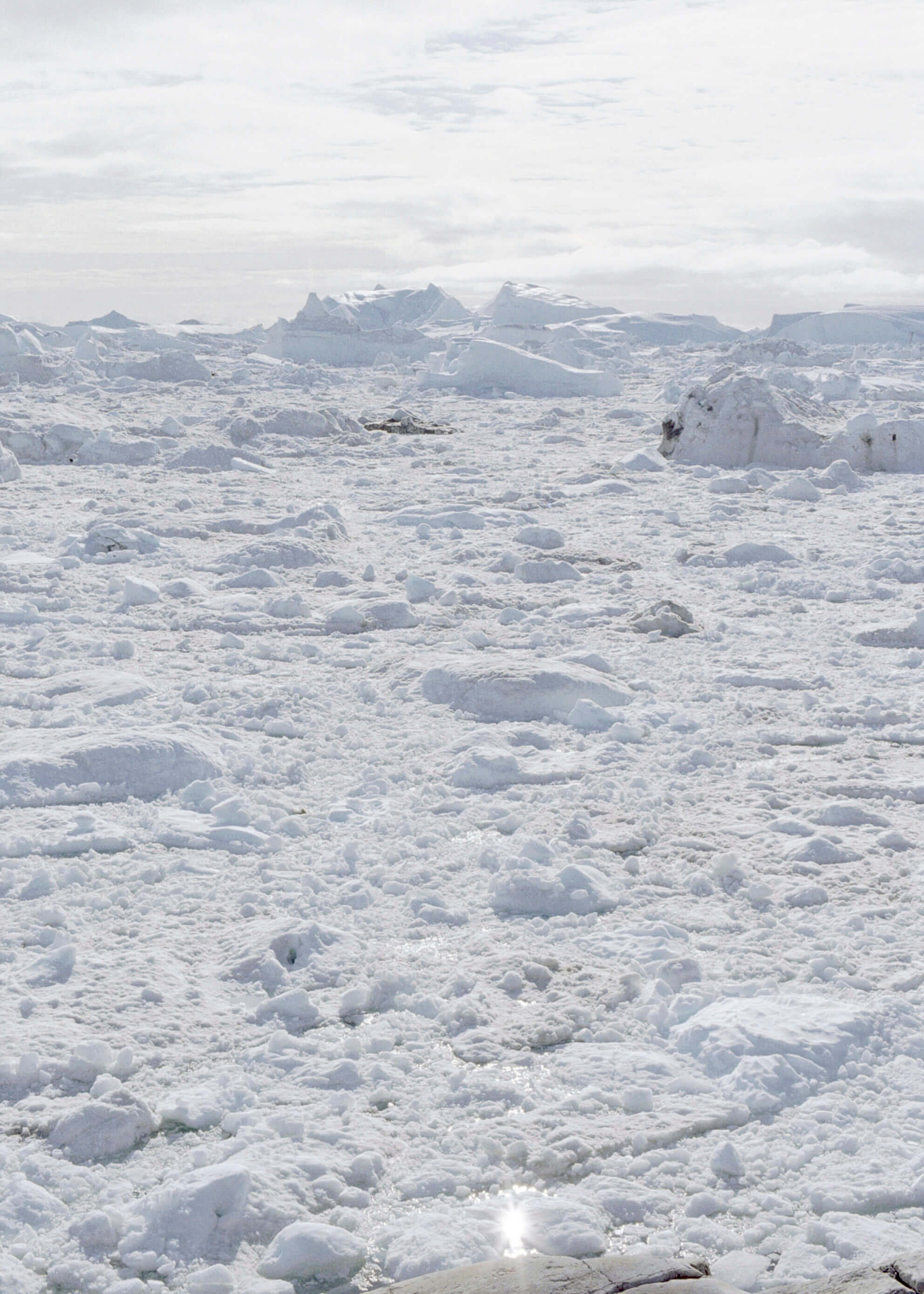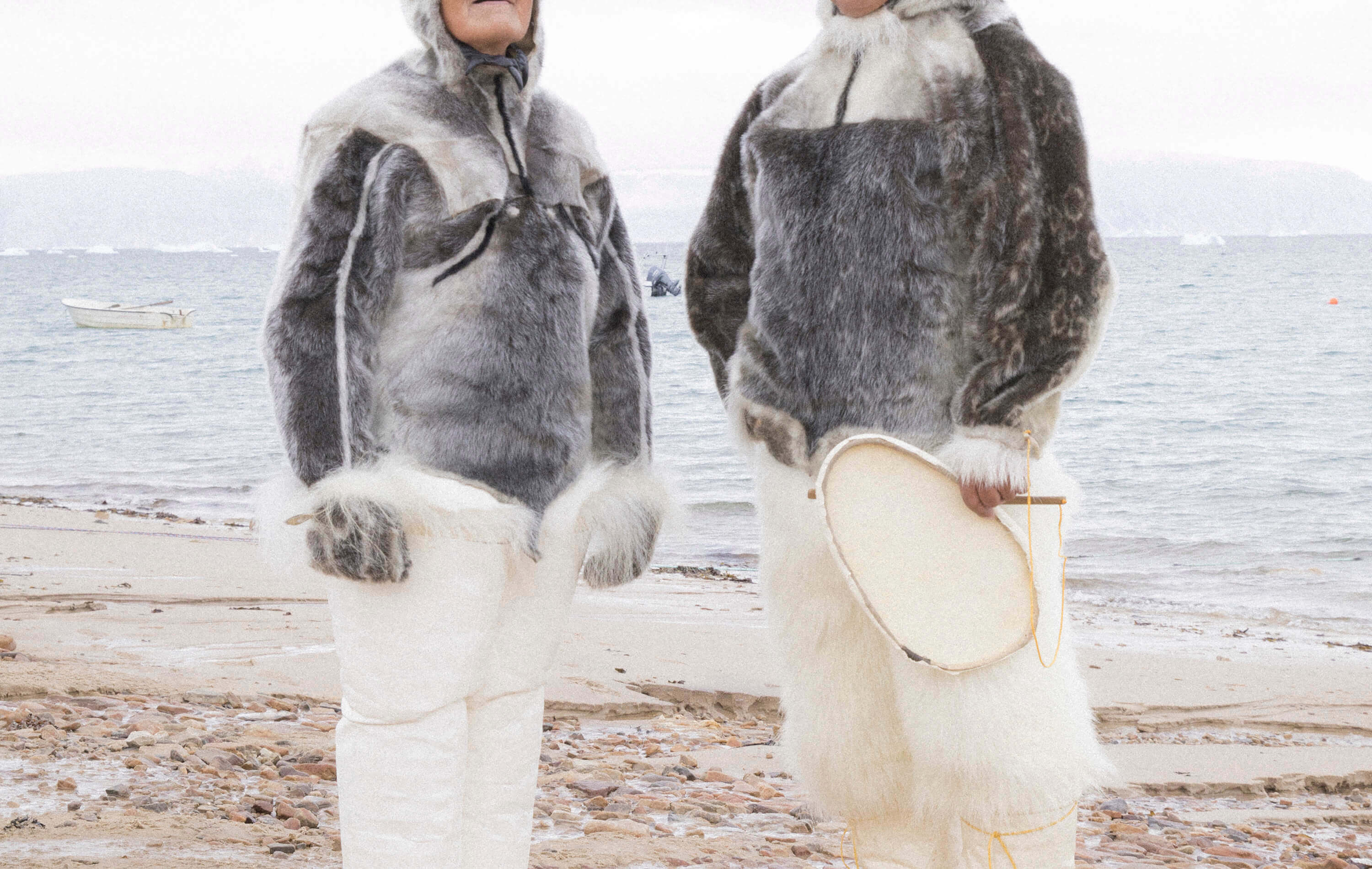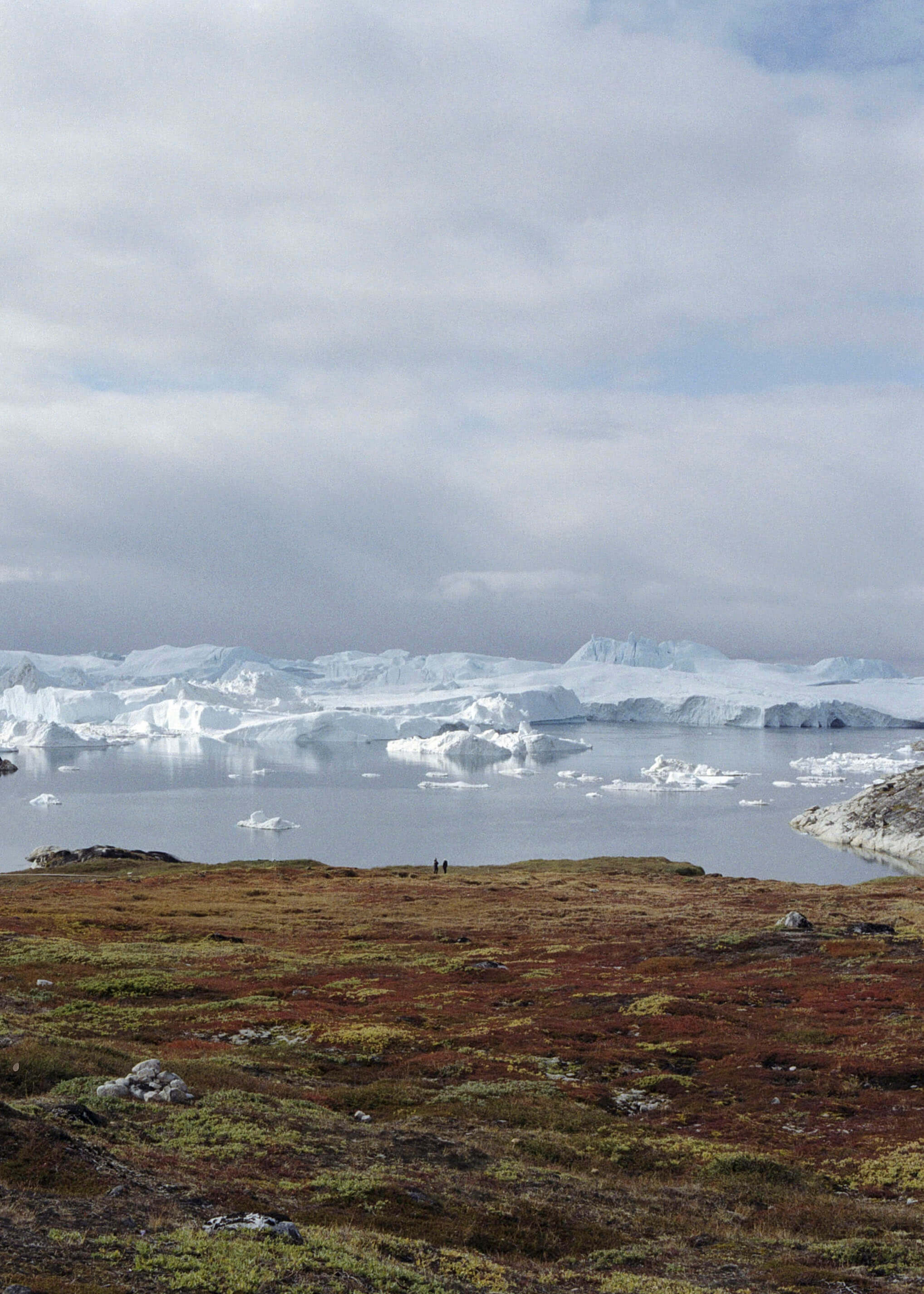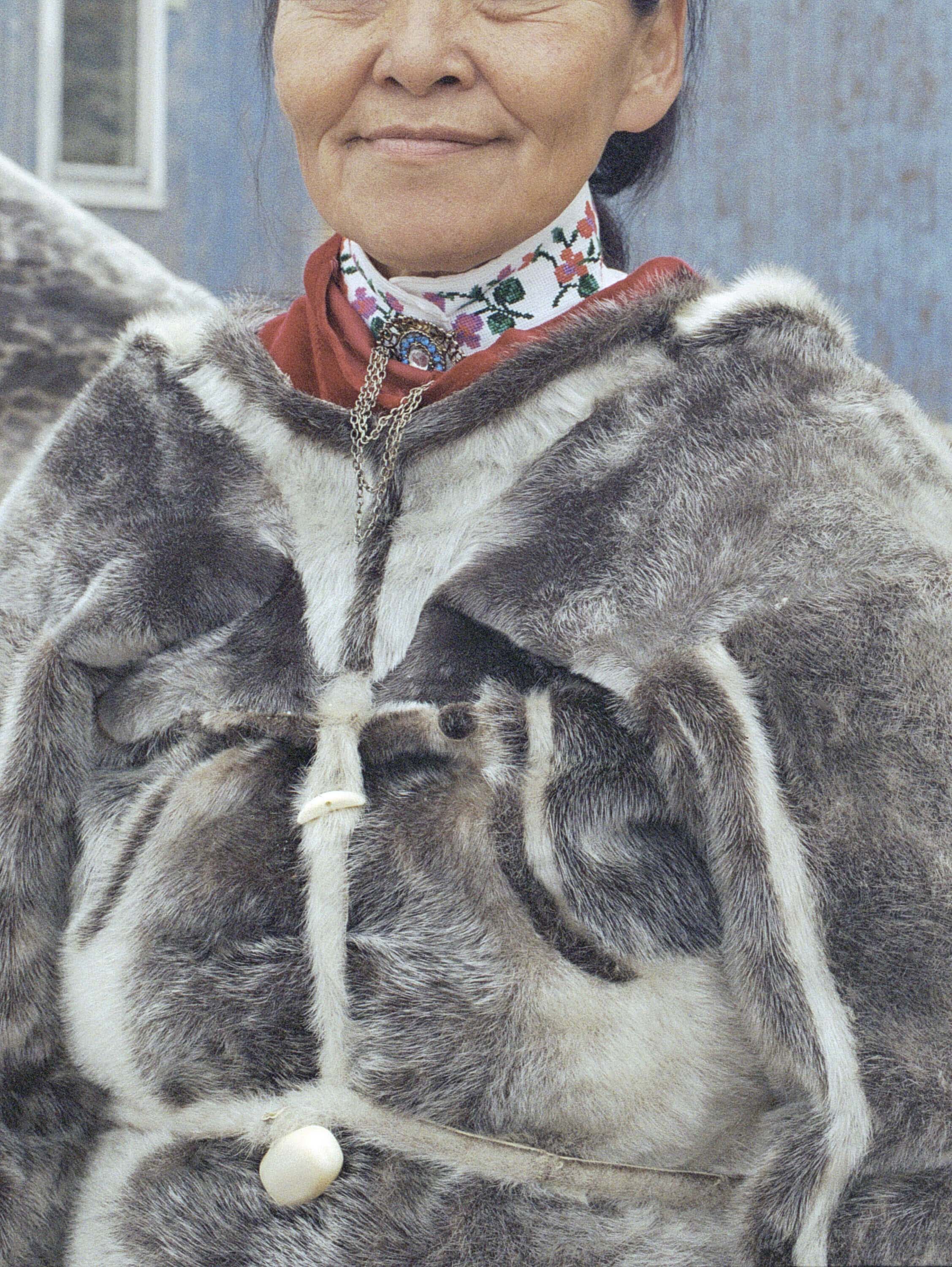O father- and motherless,
O dear little one-all-alone
give me boots of caribou.
Bring me a gift,a beast of those beasts
that make luscious blood-soup;
a beast of the beasts
from the depths of the sea
and not from the plains of earth.
Little father- and motherless one,
bring me a gift.
Across Arctic America: Narrative of the Fifth Thule Expedition by Knud Rasmussen.
Danish and Greenlandic children believe that Santa Claus has a summer hut in Spraglebugten Bay on the island of Uummannaq on the western coast of Greenland and that’s where they send their letters.
You get there by setting off in the direction of the “seal heart-shaped” mountain, a bare, prominent and isolated rock which gives the island and town of Uummannaq their name. Here everyone recognizes the shape of a seal’s heart, they hunt 200,000 a year, they trade its skin and, the further north you go, the more they still eat its meat.
The mountain, and that of Uummannaq in particular, has something magical about it, so to speak: it connects the world above – the Moon, the Sun, the planets, the stars and other forces and spirits of the air – to the world below, of the sea mammals, the fish and the ocean abysses. A poem in the form of a silent prayer rose up to the mountain from the voice of an Inuit child. A young explorer heard, and transcribed it into Kalaallisut, which he had spoken even since he was a child.
Then he also wrote it down in Danish, and then someone found it and translated it into English so that we could all know all the cruel sweetness of the life of a child in the Arctic. The explorer was called Knud and at the age of seven he had already earned his first dog sleigh for bringing an injured hunter back to the village, guiding him home from the edges of the ice where he was hunting sea animals.
In Greenland, things are transported in a different way to the rest of the Nordic world, owing to the climate and the geography: 81% of the land is covered by ice, only the coasts are free, there are no railways, no roads connecting the towns, men and goods travel by sea or air, in the most remote districts of the Upper Arctic the ships only arrive from spring to autumn, snowmobiles and sleds are their cars and in the winter they drive on the sea ice. Knud Johan Victor Rasmussen was born in Greenland, son of a Danish missionary and an Inuit mother, an Eskimo, a “raw meat eater”, a label only permissible in past times to indicate the native Inuit, who call a man Inuk and men, the people, humankind, Inuit, its plural. In the year 2017, Inuk was still the most popular baby boys’ name all over Greenland. The year was 1886, the place Jakobshavn, today Ilulissat.
Two years later, Knud was nine years old and the Dane Fridtjiof Nansen spent a few days as a guest in the Rasmussens’ red house. He was 25 and had just finished an adventure. Even on paper, his crossing of the island – the island being Greenland – from east to west on cross-country skis already had a taste of the legendary about it, and even after plans and route had been upset, so it remained. It’s said that at that time the British loved to complain profusely, and equally as profusely write about the suffering endured by their teams in the polar explorations. For the Danes, on the other hand, it would have been humiliating even to say that they had felt the cold. Fridtjiof shrugged his adventure off as a summer skiing trip among friends. Yes, it might have been demanding and ambitious, but they were always buoyed along by their “good spirits”.
Tending to stand out in every field he set his hand to, at the time he was a champion skier and skater, later on a distinguished scientist and diplomat. He himself probably filed away his farthest north record as a mere medal from his younger days. The Danish lad made a mark on the child Knud too, who glimpsed his own future in him and that summer decided that when he grew up he’d imitate Fridtjiof Nansen, in his own way. In the second half of the twentieth century, a huge party set off, with the excuse of going to investigate the disappearance of Franklin and team, spotted for the last time in Baffin Bay in July 1845.
The expedition leaders pandered to their own personality, often a patriotic ambition – a British record seemed de rigueur – while the Inuits, enrolled in their teams thanks to their obvious ability to live and travel in that cold desert, couldn’t get their heads round that desire to arrive at the North Pole at all costs. Movement has always been part of Arctic life. Men follow animals. European men follow something incomprehensible for the local people.
At the age of 30, Knud was an accomplished ethnographer, author and interpreter, and the first scholar to shift attention from geography to human history. He wanted to meet them, the “New People” of Thule, a mysterious people from the extreme north, whom he’d heard many stories about when he was a little boy. He wanted to meet these isolated human settlements in the north of Greenland, tiny communities frozen out of representation in the local Danish committees by the sea ice which only breaks up into mobile shards of glass in June.
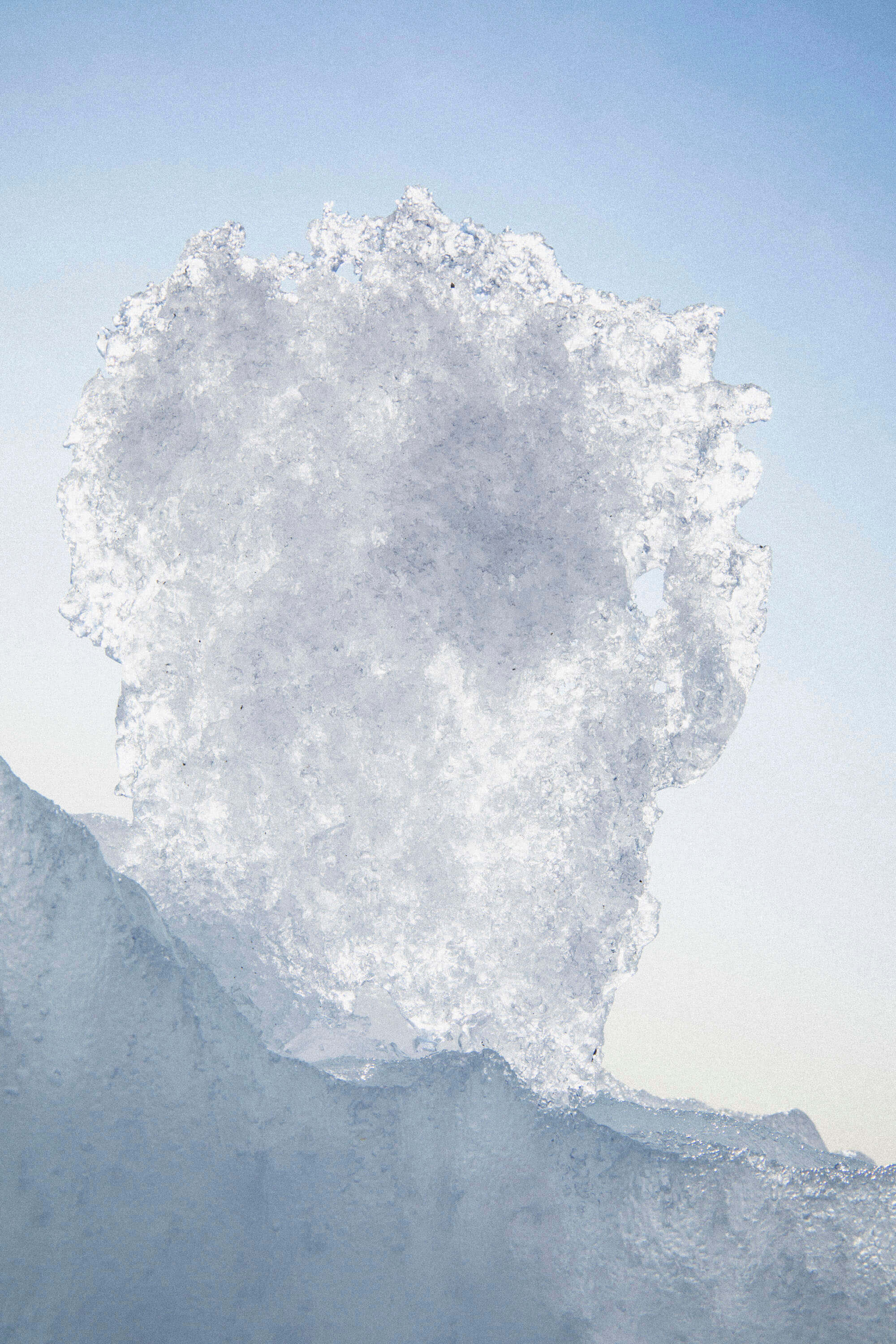
In 1910 Knud set up the Thule station in Cape York as the base for his seven Arctic explorations on a dog sleigh. After questioning the Greenlandic communities, Knud’s dream had reached even greater heights, with his aim to sample and listen to all the Inuit peoples in Canada, Alaska and lastly Siberia, where they had all originated from. Sleighs – 142 cm long, 56 wide and 70 high, consisting of 25 pieces in total – were the winter means of transport and communication, the hunters’ mobile home. Knud was simply imitating the style of his forebears. And he was the first person to ever link back up and write down connections and similarities. Men follow animals. Knud followed men, wrote down their customs, legends, songs, poems and prayers.
The first of September 2018 was a Saturday and the Rasmussens’ red house in Ilulissat, formerly Jakobshavn, which today is a museum to our idol, is closed to visitors at the weekend. Surely it can’t be, and we insistently try to open the door. The Arctic summer lasts too little time and soon the ships will stop arriving in the harbour.
We stand on the steps, peeping into the first-floor windows, but we can only make out the wire postcard rack. We turn towards the sea, towards the biggest icebergs in the northern part of the Earth. From those windows, on clear days like today, Knud’s mother must have stared for hours at the beautiful black wooden church on her right, in the front row before the icebergs, waiting for Knud to come back. On summer days like this, he might have walked towards the now abandoned ancient valley of the Inuit men, right at the mouth of the glacier where the icebergs are born, passing through the large valley with his howling sleigh dogs and then continuing to zigzag through the soft tundra as far as the mounds of stones, a long time before they built a wooden slipway for us and painted blue bubbles to mark the way. With good eyesight, you could already see the water spray from the humpbacks hunting easy crustacean prey in the low tide of the fjord. With a good ear, you could already hear a lapping underwater, between the pieces of ice, the mysterious flipper-stroke of a seal or who knows what sea creature managing to make its way in the underwater world. We walk towards the church. It’s closed. Luckily, in the most polar village in Greenland, Qaanaaq, on approximately the 77th parallel north, 890 nautical miles from the Geographic North Pole, Aleq was there to open the “Thule” trading station, the original station of Knud Rasmussen and Peter Freuchen, which we christen the smallest and at the same time most priceless local museum, with that piece of meteorite from Cape York and a tidy collection of arts and crafts from the pre-European days of the largest island in the world.
